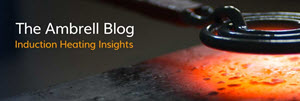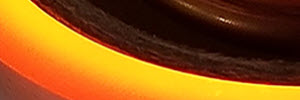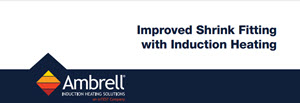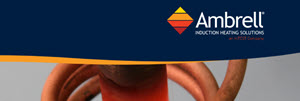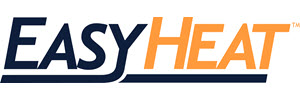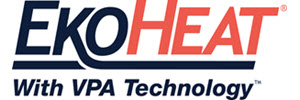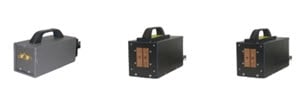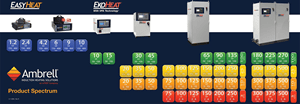Induction Shrink Fitting
- Home
- Process Applications
- Shrink Fitting
How does Induction Shrink Fitting Work?
Induction shrink fitting is a process in which a precise electromagnetic field is used to heat and thermally expand an electrically conductive material prior to assembly, resulting in an interference fit joint upon return to ambient temperature.
Select an option below:
shrink fitting Application Notes
Select from our collection of shrink fitting notes, developed over 39 years supporting our customers. Read how we helped to solve their process heating challenges!
Induction is typically a faster heating method for shrink fitting than alternatives like oven heating, offering instant on/instant off heating and
localized heating, making it an efficient option.
 Shrink Fitting Steel Pipe Assemblies
Shrink Fitting Steel Pipe Assemblies
To shrink fit steel pipe assemblies; the end product is a glass processing system
 Shrink Fitting a Steel Part & Casing
Shrink Fitting a Steel Part & Casing
A specially designed multiple turn internal helical coil was used to provide the heat to the various steel parts.
 Shrink Fitting Magnetic Steel Pistons
Shrink Fitting Magnetic Steel Pistons
Using induction for shrink-fitting magnetic steel pistons onto a chrome shaft; the client was using an unreliable handheld induction system and wanted a higher quality induction shrink-fitting solution.
Shrink-fitting hammer bits with induction for the insertion of carbide buttons; the end product is a drilling tool for the oil and gas industry.
 Shrink Fitting a Magnetic Steel Gear
Shrink Fitting a Magnetic Steel Gear
Induction shrink-fitting with EASYHEAT takes 45 minutes to heat the sample to the required temperature. The current oven process takes over two hours.
 Shrink Fitting of Roller Bearings
Shrink Fitting of Roller Bearings
A multi-turn helical coil delivers uniform heat to the entire range of the bearing sizes in the transverse mode.
 Shrink Fitting an Aluminum Tube
Shrink Fitting an Aluminum Tube
With an EASYHEAT 2 kW induction shrink-fitting system, the aluminum tube heated to the required temperature within 30 seconds. Shrink fitting then took place
 Shrink fitting an automotive aluminum motor housing
Shrink fitting an automotive aluminum motor housing
Induction shrink-fitting is fast, presents significant energy savings over an electric oven, requires a more modest footprint than an oven and can be easily integrated into an automated process
 Inserting a Steel Bushing to an Aluminum Hub
Inserting a Steel Bushing to an Aluminum Hub
The client currently uses an electric oven and the heating time is two hours, so at 60 seconds, the time savings with induction shrink-fitting is very significant
 Shrink Fitting A Gear to a Shaft
Shrink Fitting A Gear to a Shaft
The customer was using a torch, which can lead to inconsistent part quality. Induction's precise heating means the client can count on consistent results in their process
 Shrink Fitting an Aluminum Motor Housing
Shrink Fitting an Aluminum Motor Housing
The customer was using a cold press, but it was creating part defects. This was resolved with induction heating: the process took just two minutes compared to 40 minutes and they were able to achieve their targeted production rate.
 Shrink Fitting Stainless-Steel Sleeve & Shaft
Shrink Fitting Stainless-Steel Sleeve & Shaft
The customer currently uses electric ovens that run 24 hours a day, 5 days per week and their primary concern is to save on the energy cost of heating the parts in the ovens.
 Shrinkfitting a steel mud pump liner
Shrinkfitting a steel mud pump liner
A twenty-turn helical coil is used to heat the chain. The chain is fed through the coil at a rate of 1 meter per minute to reach the desired 1760 °F (960 °C) for the tempering process...
 Shrink fit a steel gear onto a steel gear motor shaft
Shrink fit a steel gear onto a steel gear motor shaft
A four-turn helical internal coil is used to heat the gear bore. The coil is inserted into the gear bore and power is applied for 90 seconds to reach the required 400 °F (204 °C) and expand the gear bore...
 shrink-fitting a carbide ring into a valve seat
shrink-fitting a carbide ring into a valve seat
A three turn helical coil is used to heat the steel valve seat. The steel valve seat is placed in the coil and heated for 50 seconds to enlarge the center hole & drop the carbide ring in for the shrink-fitting process.
 Shrink-fitting auto turbo charger impeller blades onto an aluminum shaft
Shrink-fitting auto turbo charger impeller blades onto an aluminum shaft
Induction heating provides repeatable results, reduced cycle time, lower consumables cost and even distribution of heating
 Shrink fitting aluminum pulley to insert inner bearing
Shrink fitting aluminum pulley to insert inner bearing
A three turn helical coil is used to heat the aluminum pulley. The pulley is heated to 464 °F (240 °C) in 20 seconds to expand the inner diameter and then the inner bearing is inserted to form the completed part.
 shrink-fitting an assembled wrist pin into a connecting rod
shrink-fitting an assembled wrist pin into a connecting rod
Induction heating provides more accurate control of heat vs a flame burner, it heats only the knuckle, not the whole part, it prevents discoloring due to lower temperature used and increases productivity due to repeatability & ease of operation. A foot pedal & timer is used.
 shrink-fitting a cast iron rocker arm assemblies
shrink-fitting a cast iron rocker arm assemblies
A four-turn helical coil heats the ring at one end of the assembly. The coil is designed to concentrate the field towards the center of the assembly where the thermal mass is greatest.
 Shrink fit a motor shaft and roller
Shrink fit a motor shaft and roller
Processing with induction heat saves power and time. The complete tube does not have to reach the desired temperature as it does when heating with an oven. Being able to selectively heat a zone allows for a much quicker transfer of heat.
 Shrink-fitting a Camshaft Gear
Shrink-fitting a Camshaft Gear
Heating a camshaft gear with a bore size of 1.630 inch to shrink fit over a steel shaft that has a diameter of 1.632 inch. A temperature of 500F is required for the gear to expand 0.002 inch in order to slip over the shaft.
 shrink-fitting a Fuel Pump Housing and Inserts
shrink-fitting a Fuel Pump Housing and Inserts
To heat an aluminum fuel pump housing measuring 8 x 45 x 3.5 inch to 375F, allowing steel parts to be inserted.
 Shrink Fitting Cam Shaft Gears
Shrink Fitting Cam Shaft Gears
To heat aluminum and steel camshaft gears to over 500°F within 4 minutes for a shrink fitting application.
 Shrink fit a carbon graphite ring insert into an outer steel band
Shrink fit a carbon graphite ring insert into an outer steel band
To heat a steel band to 1000 ºF (538 ºC) and insert a carbon graphite ring into the center of the steel band.
shrink fitting Application Notes
Thank you Friend for trusting us with your shrink fitting inquiries. Read any of our application notes below without registration.
Induction is typically a faster heating method for shrink fitting than alternatives like oven heating, offering instant on/instant off heating and
localized heating, making it an efficient option.
 Shrink Fitting Steel Pipe Assemblies
Shrink Fitting Steel Pipe Assemblies
To shrink fit steel pipe assemblies; the end product is a glass processing system
 Shrink Fitting a Steel Part & Casing
Shrink Fitting a Steel Part & Casing
A specially designed multiple turn internal helical coil was used to provide the heat to the various steel parts.
 Shrink Fitting Magnetic Steel Pistons
Shrink Fitting Magnetic Steel Pistons
Using induction for shrink-fitting magnetic steel pistons onto a chrome shaft; the client was using an unreliable handheld induction system and wanted a higher quality induction shrink-fitting solution.
Shrink-fitting hammer bits with induction for the insertion of carbide buttons; the end product is a drilling tool for the oil and gas industry.
 Shrink Fitting a Magnetic Steel Gear
Shrink Fitting a Magnetic Steel Gear
Induction shrink-fitting with EASYHEAT takes 45 minutes to heat the sample to the required temperature. The current oven process takes over two hours.
 Shrink Fitting of Roller Bearings
Shrink Fitting of Roller Bearings
A multi-turn helical coil delivers uniform heat to the entire range of the bearing sizes in the transverse mode.
 Shrink Fitting an Aluminum Tube
Shrink Fitting an Aluminum Tube
With an EASYHEAT 2 kW induction shrink-fitting system, the aluminum tube heated to the required temperature within 30 seconds. Shrink fitting then took place
 Shrink fitting an automotive aluminum motor housing
Shrink fitting an automotive aluminum motor housing
Induction shrink-fitting is fast, presents significant energy savings over an electric oven, requires a more modest footprint than an oven and can be easily integrated into an automated process
 Inserting a Steel Bushing to an Aluminum Hub
Inserting a Steel Bushing to an Aluminum Hub
The client currently uses an electric oven and the heating time is two hours, so at 60 seconds, the time savings with induction shrink-fitting is very significant
 Shrink Fitting A Gear to a Shaft
Shrink Fitting A Gear to a Shaft
The customer was using a torch, which can lead to inconsistent part quality. Induction's precise heating means the client can count on consistent results in their process
 Shrink Fitting an Aluminum Motor Housing
Shrink Fitting an Aluminum Motor Housing
The customer was using a cold press, but it was creating part defects. This was resolved with induction heating: the process took just two minutes compared to 40 minutes and they were able to achieve their targeted production rate.
 Shrink Fitting Stainless-Steel Sleeve & Shaft
Shrink Fitting Stainless-Steel Sleeve & Shaft
The customer currently uses electric ovens that run 24 hours a day, 5 days per week and their primary concern is to save on the energy cost of heating the parts in the ovens.
 Shrinkfitting a steel mud pump liner
Shrinkfitting a steel mud pump liner
A twenty-turn helical coil is used to heat the chain. The chain is fed through the coil at a rate of 1 meter per minute to reach the desired 1760 °F (960 °C) for the tempering process...
 Shrink fit a steel gear onto a steel gear motor shaft
Shrink fit a steel gear onto a steel gear motor shaft
A four-turn helical internal coil is used to heat the gear bore. The coil is inserted into the gear bore and power is applied for 90 seconds to reach the required 400 °F (204 °C) and expand the gear bore...
 shrink-fitting a carbide ring into a valve seat
shrink-fitting a carbide ring into a valve seat
A three turn helical coil is used to heat the steel valve seat. The steel valve seat is placed in the coil and heated for 50 seconds to enlarge the center hole & drop the carbide ring in for the shrink-fitting process.
 Shrink-fitting auto turbo charger impeller blades onto an aluminum shaft
Shrink-fitting auto turbo charger impeller blades onto an aluminum shaft
Induction heating provides repeatable results, reduced cycle time, lower consumables cost and even distribution of heating
 Shrink fitting aluminum pulley to insert inner bearing
Shrink fitting aluminum pulley to insert inner bearing
A three turn helical coil is used to heat the aluminum pulley. The pulley is heated to 464 °F (240 °C) in 20 seconds to expand the inner diameter and then the inner bearing is inserted to form the completed part.
 shrink-fitting an assembled wrist pin into a connecting rod
shrink-fitting an assembled wrist pin into a connecting rod
Induction heating provides more accurate control of heat vs a flame burner, it heats only the knuckle, not the whole part, it prevents discoloring due to lower temperature used and increases productivity due to repeatability & ease of operation. A foot pedal & timer is used.
 shrink-fitting a cast iron rocker arm assemblies
shrink-fitting a cast iron rocker arm assemblies
A four-turn helical coil heats the ring at one end of the assembly. The coil is designed to concentrate the field towards the center of the assembly where the thermal mass is greatest.
 Shrink fit a motor shaft and roller
Shrink fit a motor shaft and roller
Processing with induction heat saves power and time. The complete tube does not have to reach the desired temperature as it does when heating with an oven. Being able to selectively heat a zone allows for a much quicker transfer of heat.
 Shrink-fitting a Camshaft Gear
Shrink-fitting a Camshaft Gear
Heating a camshaft gear with a bore size of 1.630 inch to shrink fit over a steel shaft that has a diameter of 1.632 inch. A temperature of 500F is required for the gear to expand 0.002 inch in order to slip over the shaft.
 shrink-fitting a Fuel Pump Housing and Inserts
shrink-fitting a Fuel Pump Housing and Inserts
To heat an aluminum fuel pump housing measuring 8 x 45 x 3.5 inch to 375F, allowing steel parts to be inserted.
 Shrink Fitting Cam Shaft Gears
Shrink Fitting Cam Shaft Gears
To heat aluminum and steel camshaft gears to over 500°F within 4 minutes for a shrink fitting application.
 Shrink fit a carbon graphite ring insert into an outer steel band
Shrink fit a carbon graphite ring insert into an outer steel band
To heat a steel band to 1000 ºF (538 ºC) and insert a carbon graphite ring into the center of the steel band.
Benefits of Shrink Fitting with Induction
Process repeatability, accuracy, energy efficiency and speed are four hallmarks of induction heating for virtually any application. Additionally, induction heating delivers heat to the targeted part, not the atmosphere around it, so there is no risk of distortion.
Safety is another considerable benefit, as there is no open flame, which makes it a viable option for almost any manufacturing environment.
Why use induction for shrink fitting?
Induction delivers heat to the targeted part, not the atmosphere around it, so there is no risk of distortion and temperature can be controlled in a precise manner. Safety is improved, since it does not use an open flame.
Can induction be used for insertion & disassembly?
With induction shrink fitting, you use thermal expansion to fit or remove parts. A metal component is heated to 150-300 °C (305-572 °F), and that causes it to expand. This allows for the removal or insertion of a part.
From our blog
Press Fitting Steel Sleeves with InductionOther Shrink Fitting Resources
Our Systems for shrink fitting with Induction
AMBRELL CORPORATION
1655 Lyell Avenue
Rochester, NY 14606
United States
F: +1 585 889 4030
AMBRELL B.V.
Holtersweg 1
7556 BS Hengelo
The Netherlands
AMBRELL Ltd.
Unit 6, Space Business Centre
Tewkesbury Road
Cheltenham, GLOS, GL51 9FL
United Kingdom
F: +31 546 788 154


 Press Fitting Steel Sleeves
Press Fitting Steel Sleeves Shrink Fitting Hammer Bits
Shrink Fitting Hammer Bits Press Fitting Steel Sleeves
Press Fitting Steel Sleeves Shrink Fitting Hammer Bits
Shrink Fitting Hammer Bits

